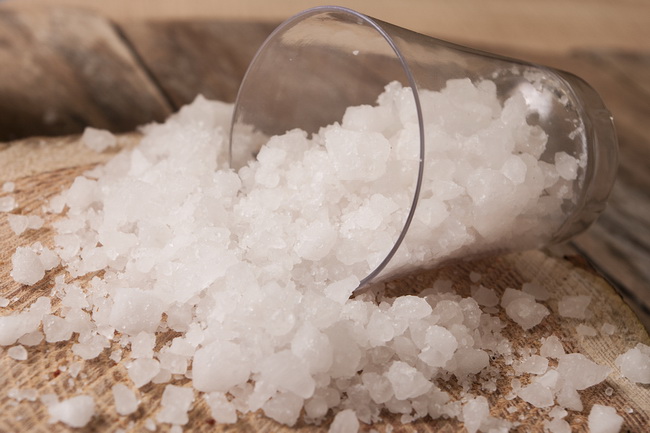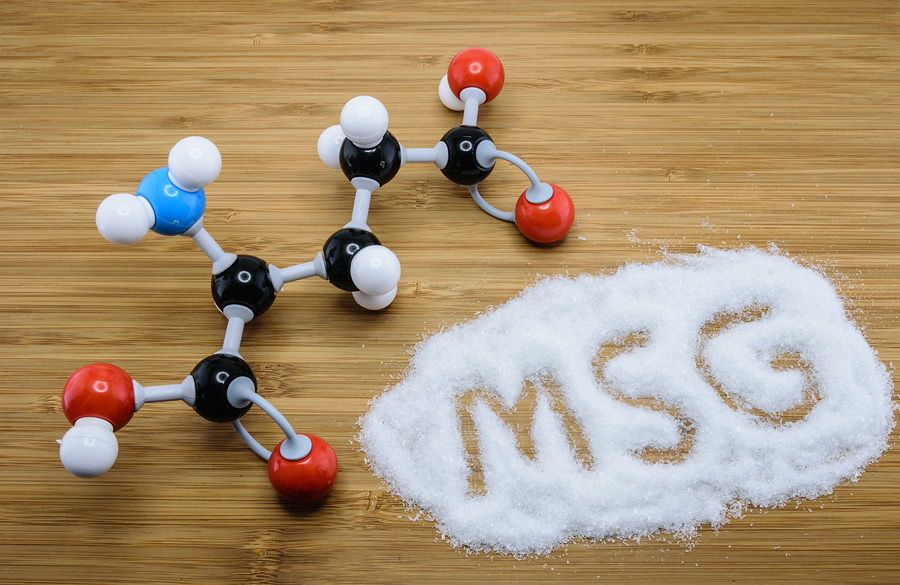- Make It Yourself Lavender Heart-Shaped Bath Bombs!
- 20 Things You Never Knew About “Down There”
- 12 Best Foods For Those Suffering From Arthritis Pain
- 12 Personal Hygiene Mistakes Almost Everyone Makes (Mom Never Told You About #4!)
- 15 Medicinal Plants And Herbs From The Cherokee People
- 12 Mind-Blowing Benefits Of Drinking Coconut Water During Pregnancy
- 12 Outstanding Winter Foods That Won’t Fatten You Up Like A Christmas Turkey
Do You Have A Salt Tooth?

Photo credit: bigstock.com
Everyone knows someone who has a sweet tooth. They gravitate towards everything sweet – cakes, cookies, candy, ice cream – you name it and that person is not happy unless they are able to get to a sweet treat. There are other people who don’t really care for sweets that much but have the same cravings towards foods that are salty. Recent findings have focused on what is behind having a “salt tooth.”
If you have a sweet tooth you know that if it is not kept under control you run the risk of developing type 2 diabetes. There are glucose meters available at most pharmacies where you can check your blood sugar levels to make sure your numbers are staying within the normal ranges.
What happens if you love salty foods? There are health risks for everything that runs out of the normal range, but salt cravings also have risks if you consume too little. Is it just the way you were raised and the foods that you consumed growing up? The American Heart Association have actually identified a gene for people who have tendencies more towards salt than sugar that they have tagged TAS2R48.
How much salt is too much?
The amount of sodium that the American Heart Association has set as a normal range is 2,300 milligrams each day. If a person has too much salt on a regular basis, they could end up having high blood pressure. In a recent study regarding salt intake, the AMA found that those with the TAS2R48 gene were two times more likely to go over the 2,300 mg of salt than those who did not have this gene.
The study included other aspects of a person’s taste buds who have this gene and found that they had a more enhanced sense of bitterness in foods and they stayed away from foods that fit into this group. They found that those whose taste buds reacted to bitter foods more intensely, in turn, gravitated to a higher level of sodium. Some scientists even thought this group may use extra salt to “mask the bitter taste of foods.”
The purpose of the findings
The study was conducted in early November 2016 in New Orleans. The Scientific Sessions meeting of the AMA was trying to determine if after identifying a person as having a tendency towards salt if they would be successful in providing them with “better food choices through education” that would be tailored specifically towards them.
Continue to Page 2

Photo credit: bigstock.com
Is there such a thing as taking in too little salt?
Is it possible to consume too little salt? Sodium deficiency is a real condition. While too much salt is not good, too little can be just as bad. Many people who follow a weight reduction diet, especially the Paleo program, cut out eating junk food. It was determined that more than 77% of the salt we consume regularly comes from the sodium that is included in processed foods.
There is a range of salt that the body must adhere to in order to keep the body fluids within the appropriate balance for optimum health. That is why many athletes replenish the salt in their body that has been depleted by sweating. They do not just drink water but opt for water that has salt in it such as Gatorade. This helps to keep the electrolytes in balance and prevents the athlete from feeling weak and off kilter. Simply replacing the lost fluids with water creates an imbalance that is referred to as hyponatremia.
Other symptoms of not getting enough sodium in your body include:
- Headache
- Lack of energy
- Vomiting and nausea
- Irritability
- Confusion
- Cramps, weak muscles, and spasms
How to keep your salt intake under control
Once you know whether you have a salt tooth and lean towards taking in too much sodium, how can you correct this situation?
- You should first keep track of how much sodium you consume on a regular basis.
- Look for a site on the internet that lists the sodium content of most foods.
- Read all food labels and make an accurate sodium count for each day.
- Once you have an average sodium intake amount, look for places where you can reduce salt in order to stay within the recommended range.
- Don’t add table salt to your food once it has been seasoned and prepared.
- Reduce, and possibly eliminate, as much processed foods as you can. Just like sugar, salt is a hidden extra ingredient in many foods that you least expect it in, such as cookies and corn flakes.
Continue to Page 3

Photo credit: bigstock.com
Some examples of sodium levels in everyday foods
Keep in mind that the recommended amount of sodium intake daily is 2,300 mg. Choose your daily diet with this in mind.
- Regular table salt – 1 teaspoon: 2,325 mg
- Soy sauce – 1 teaspoon: 340 mg
- Bacon – 3 slices: 831 mg
- Pretzels – 1 cup: 611 mg
- Cheeseburger – 1 burger: 1240 mg
- Meat pizza – 1 slice: 925 mg
- Canned soup – 1 cup chicken or vegetable: 830 mg.
Foods with lower sodium levels
- Whole grain bread
- Fresh fruits including bananas, apples, watermelon, peaches and pears
- Fresh vegetables including broccoli, cauliflower, sweet potatoes, and cabbage
- Eggs and substitutes
- Freshly prepared beef, pork, veal or fish
- Water-packed tuna, low-sodium
- Low-fat yogurt
- Low-sodium cottage cheese
- Skim milk
- Ice cream
READ ALSO: Sugar: Is It As Addictive As Drugs? Video
Now that you have the information you need to keep your salt intake under control, keep track of your sodium levels on a regular basis. As with anything, once you remove yourself from consuming overly salty foods you will find that if you return to salty foods again you may wonder how you were able to tolerate them.
References:
































